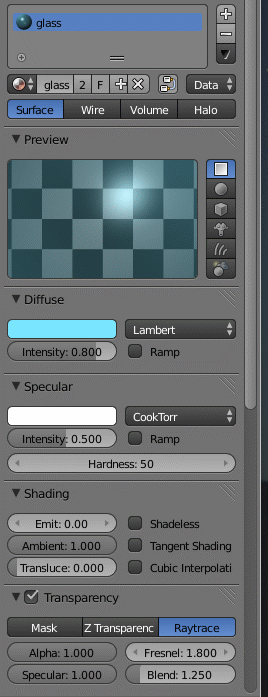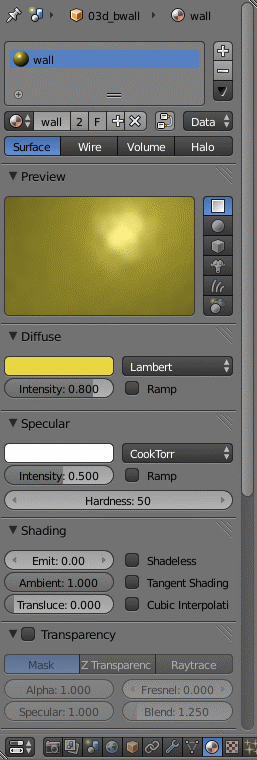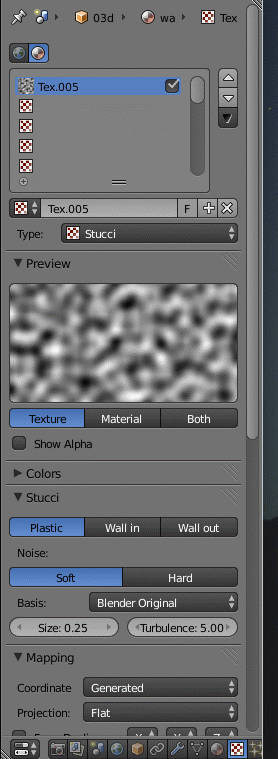Tutorial 09
Import geometry to Blender
What Blender version to use
Blender 4 or higher
Does not run in my machine
Blender 3
Barely runs in my machine
Blender 2.79 has the following minimum hardware requirements: a 64-bit operating system with glibc 2.28 or newer, a 4-core CPU with SSE4.2 support, 8 GB of RAM, and a GPU with 2 GB VRAM and OpenGL 4.3 support.
Only moves components when in wireframe, otherwise crashes
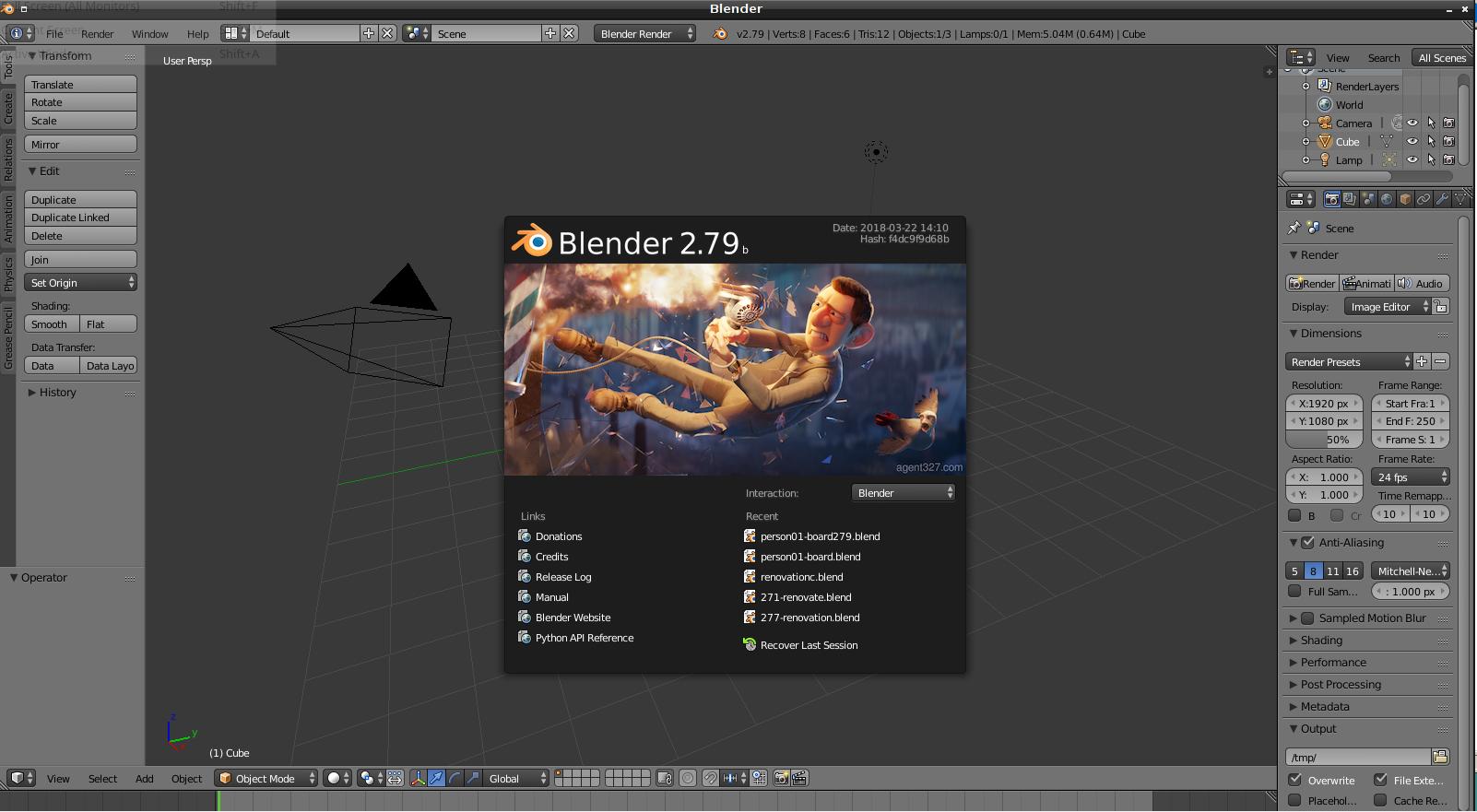
Blender 2.69 has the following minimum hardware requirements: a 64-bit dual-core CPU with SSE4.2 support, 8 GB of RAM, and a graphics card with at least 2 GB of VRAM that supports OpenGL 4.3. If your device is less than optimal, stick to Wireframe and avoid manoeuvres while in Solid or higher.
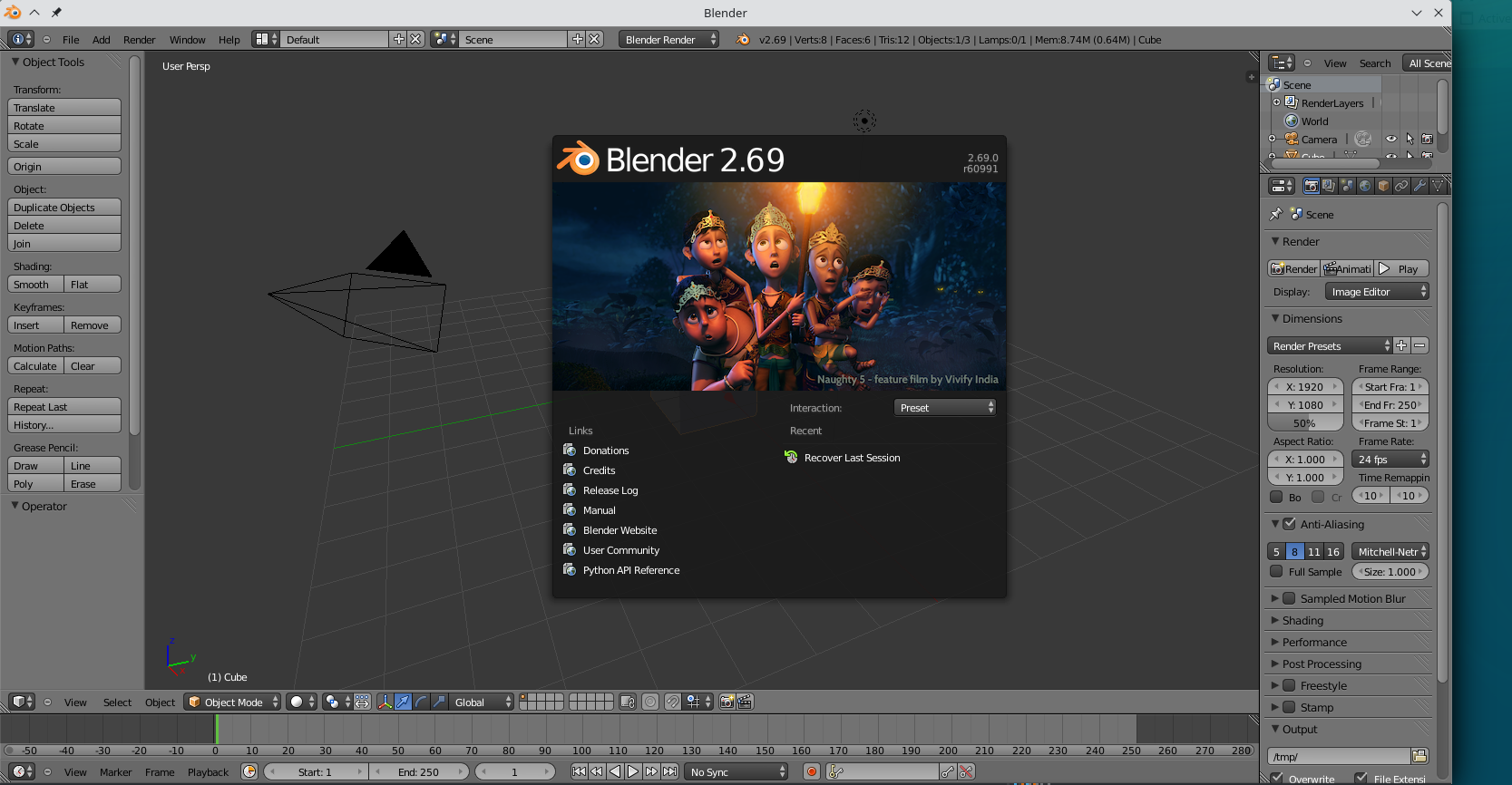
Helpful for Blender is this online book: https://en.wikibooks.org/wiki/Blender_3D:_Noob_to_Pro/
Blender 2.59 has the following minimum hardware requirements: a 3D capable graphics card with OpenGL 2.1 support, 2 GB of RAM, and a 3-button mouse. For optimal performance, a dual-core CPU with SSE4.2 support, 4 GB of RAM, and a dedicated graphics card with more than 256MB of VRAM are recommended.
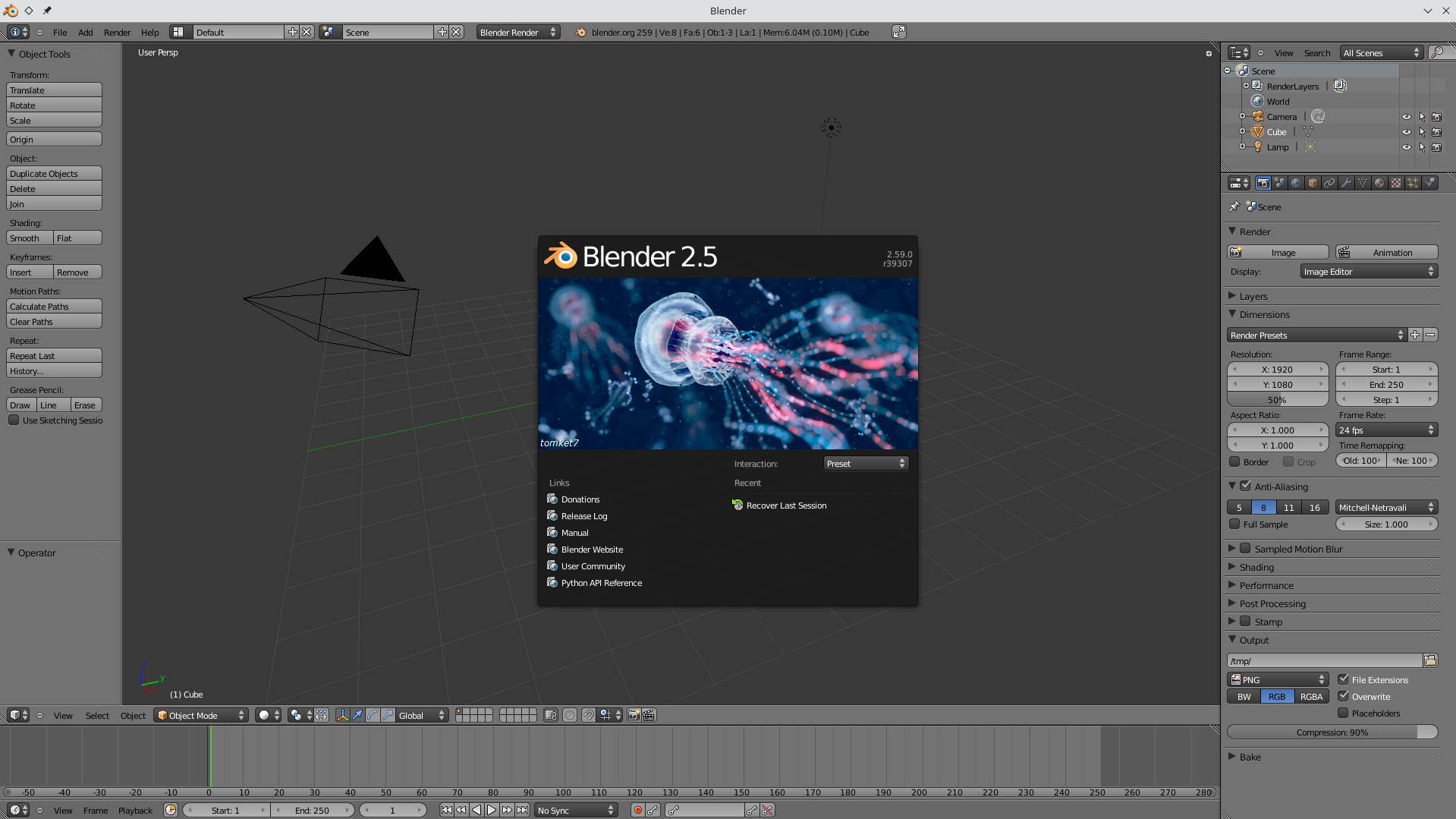
Blender 2.49 had relatively modest system requirements compared to modern versions. It primarily needed a 32-bit or 64-bit operating system (Windows, Linux, or macOS), a decent CPU with SSE support, at least 512MB of RAM, and a graphics card with OpenGL support.
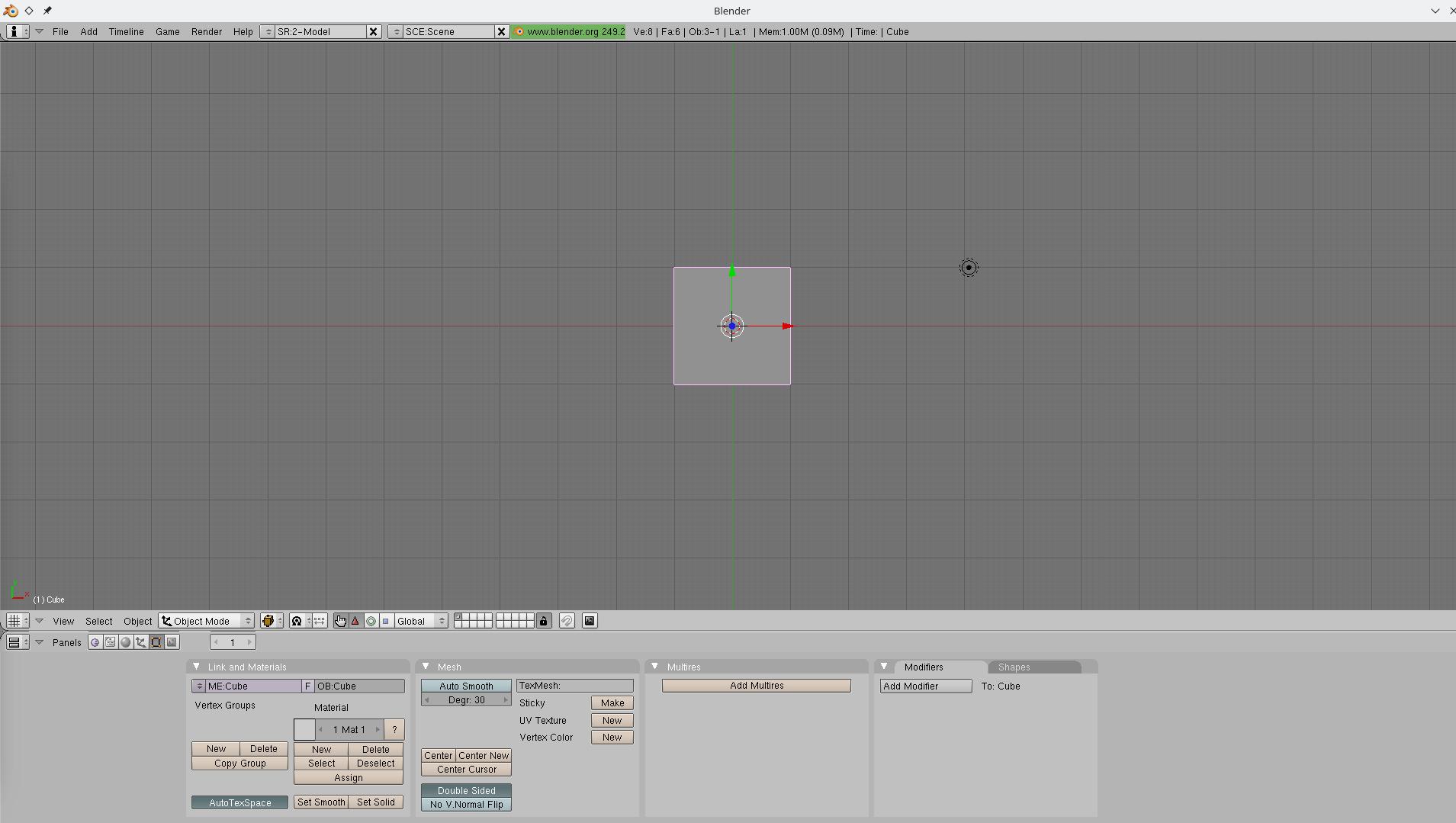
Blender 2.39, being a very old version, will have different system requirements than modern versions. It's likely to run on older hardware, but specific requirements are hard to find directly. Generally, for older versions, you'd be looking at: a 64-bit system, a dual-core CPU, 4GB of RAM (8GB is recommended), and a graphics card with OpenGL 2.1 support (2GB VRAM is a good idea)
General
Important is to use a common centre and orientation in the 3d creation software
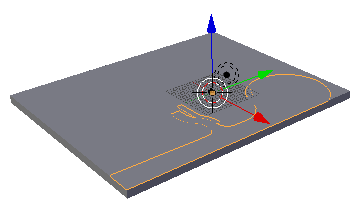
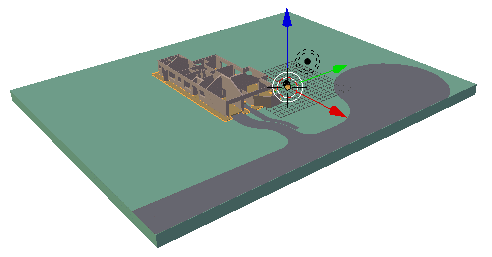
The technique used here creates common models for common classes. This does not prevent importation of more complex models already available in Blender
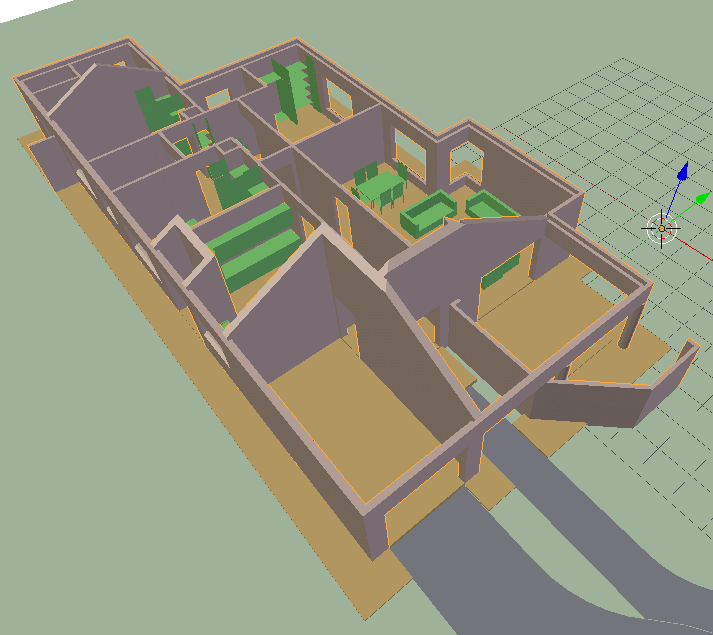
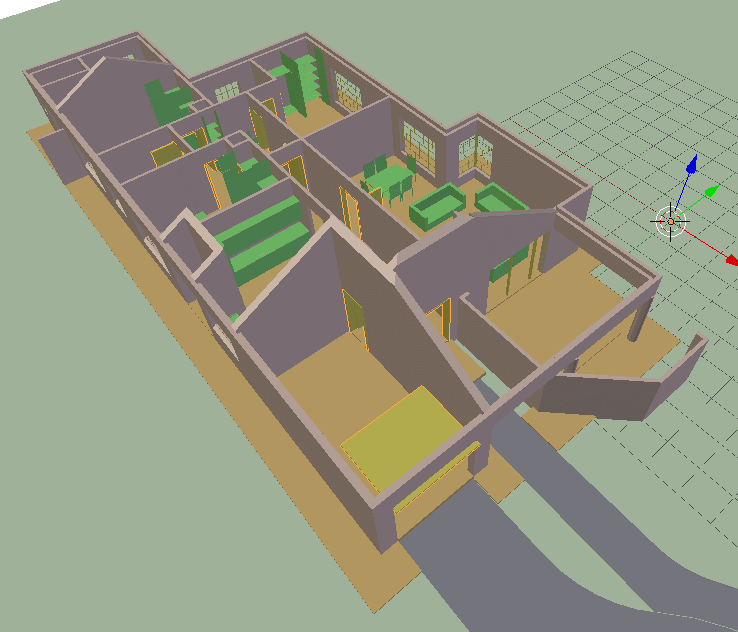
By having common elements, application of colours and finishes is simplified
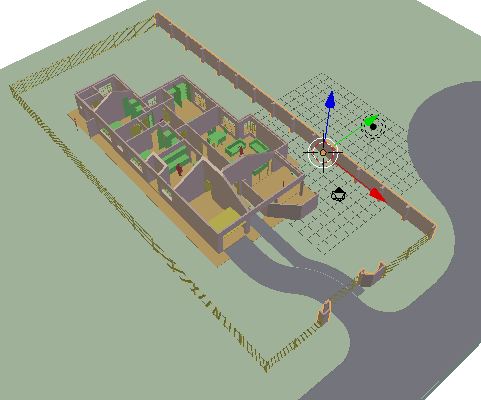
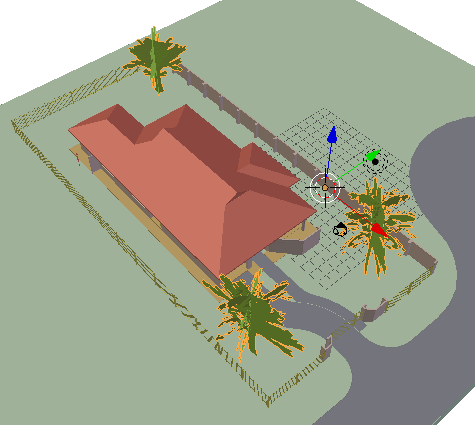
Light positions are visible

Neutral light settings for clear birdseye image
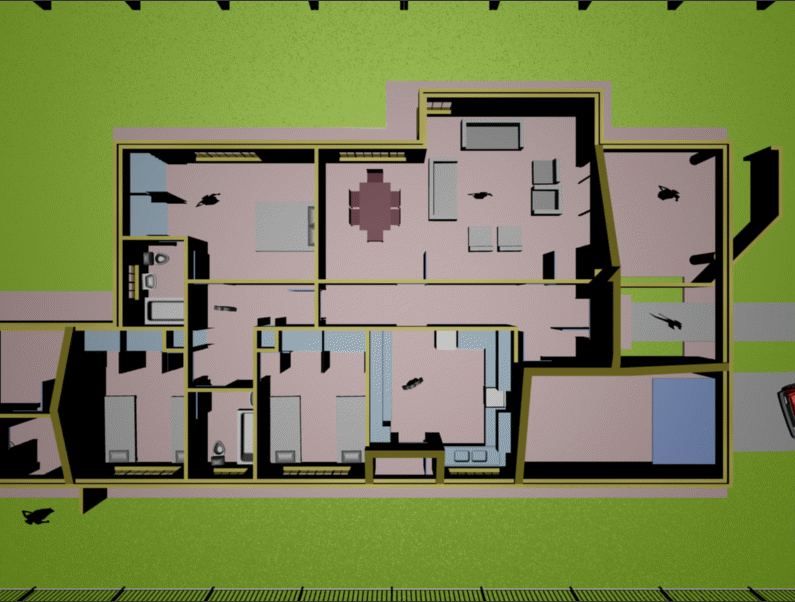
Adjusting the intensity, direction and shadows related to the lights

Colours and Textures
Textures can help to relieve the flat colours ie for plastered walls
